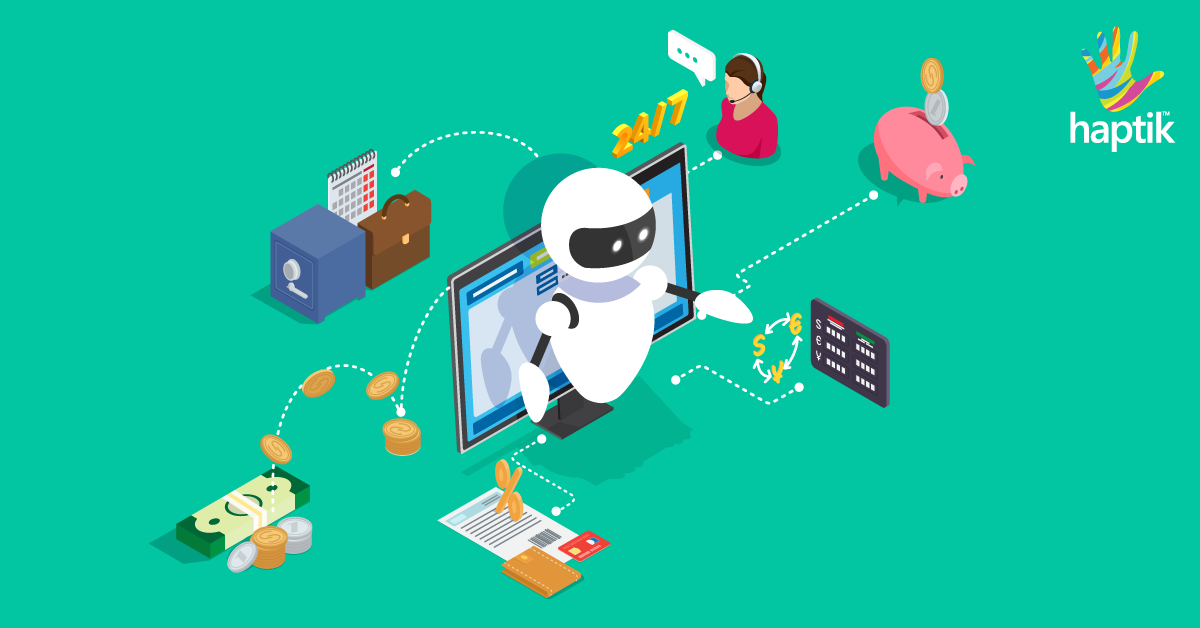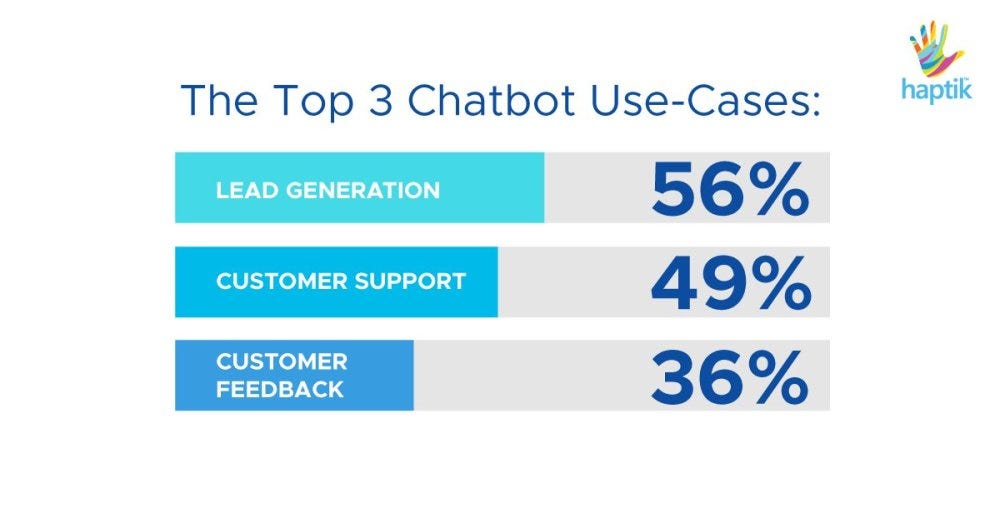Examples, Best Use Cases and the Future
Chatbots in Banking — Examples, Best Use Cases and the Future


In today’s day and age, it’s our bankers, more than anyone else, who have taken Socrates’ advice seriously.
Banks have been the early adopters of most new technology, that has ever seen widespread commercial success.
So when Artificial Intelligence started making the rounds, it was only a matter of time before banks turned to AI for smarter automation solutions to meet the ever-growing expectations of customers!
In the hype cycle, chatbots have seen a lot of interest and have been implemented over the years. Chatbots are AI enabled conversational interfaces. Bots can conduct smart and compelling conversations on behalf of the bank with millions of consumers, at a fraction of the cost. They promise to enhance the bank’s customer’s experience and their approachability.
But, this meant that banks had to restructure some minor portions of their business processes. Still, given the long-term benefits, banks have been rather quick at biting the bullet.
A report by Juniper Research claims that for every query that a chatbot handles, banks save 4 minutes of an agent’s time translating to per query. By 2022, this will amount to billion in annual savings.
We think it’s worth it to examine the current state of chatbots in the banking industry and see where they’re going:
Bank chatbots from around the world!


Taking a look at the market is the best way to understand how bank chatbots are practically being used. Let’s have a look at a few bots from the banking industry:
1) Erica by Bank of America
As a market leader in the U.S., Bank of America introduced a chatbot to send notifications to customers, provide balance information, suggest how to save money, provide credit report updates, pay bills and help customers with simple transactions. Since the introduction, Erica’s capabilities have expanded to help clients make smarter decisions.
2) American Express
American Express uses their relationship with merchants to provide benefits to their customers with the help of chatbots. This includes real-time sale notifications, contextual recommendations, and reminders about credit card benefits. For this to work, the customer has to first connect their card with the AmEx chatbot on messenger.
3) HDFC
HDFC Bank’s EVA (Electronic Virtual Assistant) is India’s AI-powered banking assistant for HDFC’s customers. It was built with the aim to help serve the customers better and faster. Helping with Branch addresses, IFSC codes, loan and interest rate information are a few of the things that EVA does.
4) HSBC Bank(Hong Kong)
Amy is a customer servicing platform which takes the form of a Virtual Chat Assistant(VCA) for corporate banking at HSBC Bank (Hong Kong). Amy can provide instant support to customers’ inquiries on a 24×7 basis. Available in English, traditional and simplified Chinese, Amy currently covers many product pages and its coverage is to be further expanded.
5) Commonwealth Bank Australia
Commonwealth Bank launched a chatbot called Ceba to assist customers with more than 200 banking tasks such as activating their card, checking account balance, making payments, or getting cardless cash. Within one year, CBA understood 500,000 ways customers asked for 500 different banking activities, making the progressive project one of the most successful ones in the bank’s history.
Best use cases that have worked so far!
There are tons of other cases where BFSI players are using chatbots. However, our primary research indicates that there are 3 business applications where bots are the clear winners already.
1) Lead Generation
The rate with which email campaigns and cold calls are going out of fashion, chatbots not only present a less irritating front but also add a novelty factor to the entire process of lead generation.
These chatbots are embedded on the bank’s website/app and start conversations with users to find out if they wish to purchase products and gauge their interest. Later, these captured ‘leads’ can be sent to the bank’s team for additional follow up until the sale is completed.
Brands have seen as high as 600% increase in the number of leads collected using chatbots as opposed to traditional mechanisms.
2) Customer Support
With the advancements in the field of computing and natural language processing, chatbots have now become capable of having smarter and more compelling conversation which means they can handle a wide variety of customer support queries which are redundant in nature.
These bots can be plugged into most customer touch points like social media profiles (Facebook Messenger, Twitter), website, app and other platforms. They ask users to specify their problems and either give them direct solutions or redirect them to the right person.
A lot of banks have had some serious success in reducing the queries coming on to their support centre post application of chatbots for support.
3) Feedback Collection
With the constant endeavour of improving the bank’s services and the absence of the technological shift in the feedback collection mechanisms, the collection of customer feedback through chatbots has shown phenomenal results for a lot of brands.
The survey format makes it compelling for users and turns the static form-style more conversational and interesting.
We conducted a survey during our webinar and here are the results:


The way ahead for chatbots in banking!
From the inception of AI, chatbots have come a really long way owing to the advancements in computational power and huge chunks of open source data being available. The ecosystem has been never as primed as it is today, for AI and NLP capabilities to be built upon. But given the trends, here are the upcoming capabilities that bots are going to master:
1) Voice Bots on IVR
Bank customer supports are notoriously famous for making customers wait for an average of 10 minutes during working hours making it seemingly impossible to reach an agent in case of emergency. A voice-based IVR system, which already a few banks have applied, helps battle this problem.
2) Alexa skills and Google home assistants
Home Assistants are picking up slowly and will soon become a part of every house as much as anything else. The experience of having a Jarvis (from Iron Man) like-system in the house would really strike at the core of the conversational experience. Link that to managing your bank accounts, fund transfers etc, availing banking services can literally be a walk in the park.
3) Handling more complicated and more unique queries
Chatbots today are programmed to handle rather simple and redundant queries, which make up the majority of the volume. In addition to this, some replies which can be pulled out from a knowledge base can be pulled out by the bot using an API. However, complicated situations still leave the bot rather red-faced. This is something that AI and NLP developers have to focus their energies on!
4) Other projects
HDFC’s Humanoid Intelligent Robotic Assistant (or IRA) is a robot you can physically interact with, which has already been launched in several Indian cities! We aren’t sure whether this trend will be widely replicated but it does make for an interesting banker.
The takeaway? Banking is one of the best use cases for chatbots right now. They make a huge difference at every stage of a customer’s lifecycle.
We’ve also seen several banks promote innovation through fintech competitions to find the next big thing in new banking technology. The market seems ready so it’s definitely a space to watch out for.
So that’s our take on chatbots in the banking industry!
Does your brand have its own chatbot story yet or are looking to make one? Let’s get talking! ✨
Love chatbots? Us too! Follow us for more awesome news from the Conversational AI space. ?
P.S: Don’t forget to clap for this post! ?
